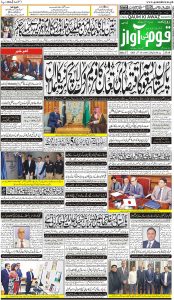
Written by: Syed Munawar Hussain Shah
Pahalgam Attack: Another Chapter in India’s False Flag Playbook Another attack in Indian Illegally Occupied Jammu & Kashmir (IIOJK), another round of blame directed at Pakistan, and once again, the Indian media plays its part in amplifying a narrative that serves political ends more than truth. This time, the attack took place in Pahalgam, targeting tourists. Within minutes, Indian news channels were echoing the same line: “Pakistan is responsible.” No proof. No investigation. Just ready-made outrage. The speed of the reaction alone is suspicious. How can conclusions be drawn before forensic teams even arrive at the site? What this reveals is not national security concern, but a scripted PR operation, executed with precision. Coincidentally—or not—the attack occurred as U.S. Vice President JD Vance was visiting the region. This is not the first time such events have aligned perfectly with key geopolitical or electoral moments. The purpose seems to be twofold: frame Pakistan and build international sympathy for India. This pattern is not new. In fact, it’s been recycled repeatedly. In 2007, the Samjhauta Express bombing killed 68 people, mostly Pakistanis. India pointed fingers across the border, only for the investigation to later reveal involvement of Hindu extremists and even an Indian Army officer. The global community stayed silent. Then came the 2008 Mumbai attacks. While they became a global symbol of terror, former CBI officer Satish Verma later revealed that these, too, were orchestrated from within to pave the way for sweeping counter-terror laws. An attack on Kerala tourists in Kashmir in 2018 occurred shortly before state elections in Kerala, Madhya Pradesh, and Rajasthan. This incident conveniently shifted the topic and fueled anti-Pakistan sentiment prior to voting. In 2019, the tragic Pulwama attack claimed the lives of forty Indian soldiers. Prime Minister Modi wasted no time in blaming Pakistan. But years later, Satya Pal Malik, then Governor of IIOJK, revealed that the incident was facilitated by the Indian state’s negligence—and possibly much more. Again, Pakistan was dragged through international mud for something it didn’t orchestrate. By the time the truth started leaking, the damage was done, elections were won, and war drums had already served their purpose. Then came Rajouri in 2023. Five Indian soldiers killed, Modi campaigning heavily—and another anti-Pakistan storm on TV. No meaningful investigation followed, just more headlines, more hatred. And now in 2025, Pahalgam follows the same tired script. What remains unanswered in every case is the same question: How do these attacks keep happening in the most militarized zone on Earth? IIOJK has nearly 700,000 Indian troops deployed. One soldier for every 7 civilians. Surveillance, checkposts, facial recognition, drones—everything you’d expect in a high-security zone. And yet, attackers manage to operate freely. Either the Indian security apparatus is dangerously incompetent, or it’s complicit. There’s no third explanation. Meanwhile, Indian media is no longer a watchdog—it has become a megaphone for state-sponsored narratives. Journalism has been replaced by jingoism. Questions have been replaced by accusations. As soon as an attack happens, anchors scream blame without a shred of evidence. Any voice demanding proof or caution is instantly silenced or branded “anti-national.” Pakistan has consistently called for independent investigations—joint or international—but India always refuses. If they have nothing to hide, what are they afraid of? Why not let neutral bodies examine the evidence? The answer is simple: control over the narrative is more important than uncovering the truth. This is not just about Pakistan’s image. It’s about justice. Real people die in these attacks. Real families are torn apart. If these are inside jobs, they are not just propaganda—they are crimes of the highest order. Crimes carried out not just to demonize a neighbor, but to manipulate millions of minds, votes, and international relationships. And the international community? Mostly silent. Strategic partnerships, trade, and geopolitical calculations make it convenient to ignore what’s happening in Kashmir. Human rights groups issue mild statements, but the silence from global powers is deafening. When the truth becomes inconvenient, it is buried. The tragedy of Pahalgam is not isolated. It is part of a consistent, deliberate strategy. A hybrid war where terror is weaponized not to protect, but to project. Pakistan cannot remain on the back foot forever. It’s time to push for accountability—not just from India, but from the world that enables its behavior by refusing to ask the hard questions. Until that happens, these cycles will continue. The real victims? The people of Kashmir, the people caught in the crossfire of political gain, and the truth—forever twisted in the fog of false flags and forgotten facts.




